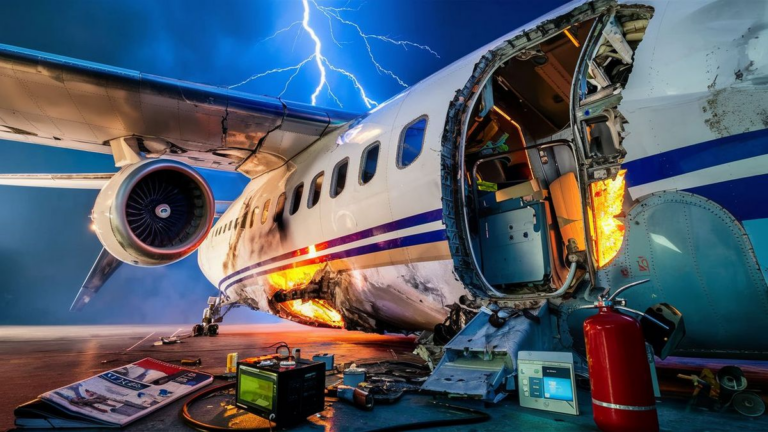When lightning strikes a plane, it initiates a sequence of events that can be both alarming and fascinating. Let’s delve into the intricate details of what occurs when the powerful force of lightning meets an aircraft in flight.
Understanding Lightning Strikes
Lightning strikes are a natural phenomenon characterized by the discharge of electricity between clouds or between a cloud and the ground. The intense heat generated during a lightning strike can reach temperatures of up to 30,000 degrees Celsius (54,000 degrees Fahrenheit), making it hotter than the surface of the sun.
Impact on Aircraft
When a plane encounters lightning, it typically strikes an extremity such as the wingtip, nose, or tail. Modern aircraft are designed to withstand lightning strikes through a combination of engineering and materials.
Conductivity and Dissipation
Most commercial aircraft are constructed with materials that conduct electricity, such as aluminum. These materials allow the lightning strike to dissipate harmlessly across the aircraft’s surface, minimizing damage.
Protective Measures
In addition to the inherent conductivity of the aircraft’s structure, planes are equipped with systems such as lightning diverters and static dischargers. These devices help to safely channel the electrical current away from critical components.
Effects on Passengers and Crew
Despite the dramatic nature of a lightning strike, passengers and crew members are typically unaffected. The aircraft’s fuselage acts as a Faraday cage, shielding those inside from the electrical discharge.
Minimal Disruption
Inside the cabin, passengers may observe a brief flash of light or hear a loud noise, but these effects are generally minimal. Pilots are trained to handle lightning strikes calmly and efficiently, ensuring the continued safety of the flight.
Post-Strike Assessment
Following a lightning strike, aircraft undergo thorough inspections to assess any potential damage. This includes visual checks, as well as more detailed examinations using specialized equipment.
Maintenance Procedures
If any damage is detected, maintenance crews are tasked with repairing or replacing affected components before the aircraft returns to service. These procedures are standard protocol in the aviation industry to ensure the ongoing safety of flights.
While the idea of lightning striking a plane may evoke images of danger and chaos, in reality, modern aircraft are well-equipped to handle such occurrences. Through a combination of engineering, materials, and procedural safeguards, the effects of lightning strikes on planes are minimized, allowing for safe and efficient air travel.
Lightning Safety Tips for Aircraft
Although aircraft are designed to withstand lightning strikes, it’s essential for pilots and crew members to follow safety protocols during thunderstorms to minimize risk:
- Avoiding thunderstorms: Pilots receive weather updates and forecasts to plan routes that minimize exposure to thunderstorms.
- Altitude adjustment: Pilots may adjust altitude to avoid areas of severe weather where lightning strikes are more likely.
- Communication: Pilots communicate with air traffic control to receive updates on weather conditions and any nearby thunderstorm activity.
- Emergency procedures: Pilots are trained to handle emergency situations, including lightning strikes, and follow established procedures to ensure the safety of passengers and crew.
Frequently Asked Questions
Here are some common questions about lightning strikes and aircraft:
| Question | Answer |
|---|---|
| Can lightning cause a plane to crash? | While lightning strikes can be alarming, they rarely cause planes to crash. Modern aircraft are designed to withstand lightning strikes, and pilots are trained to handle such situations. |
| Are there any documented cases of lightning causing plane crashes? | There have been rare instances where lightning strikes have contributed to aircraft accidents, but these cases are extremely rare and often involve other factors. |
| What should passengers do if they see lightning outside the plane? | Passengers should remain calm if they see lightning outside the plane. Lightning strikes are a common occurrence during thunderstorms, and modern aircraft are designed to safely handle such events. |
See also:






